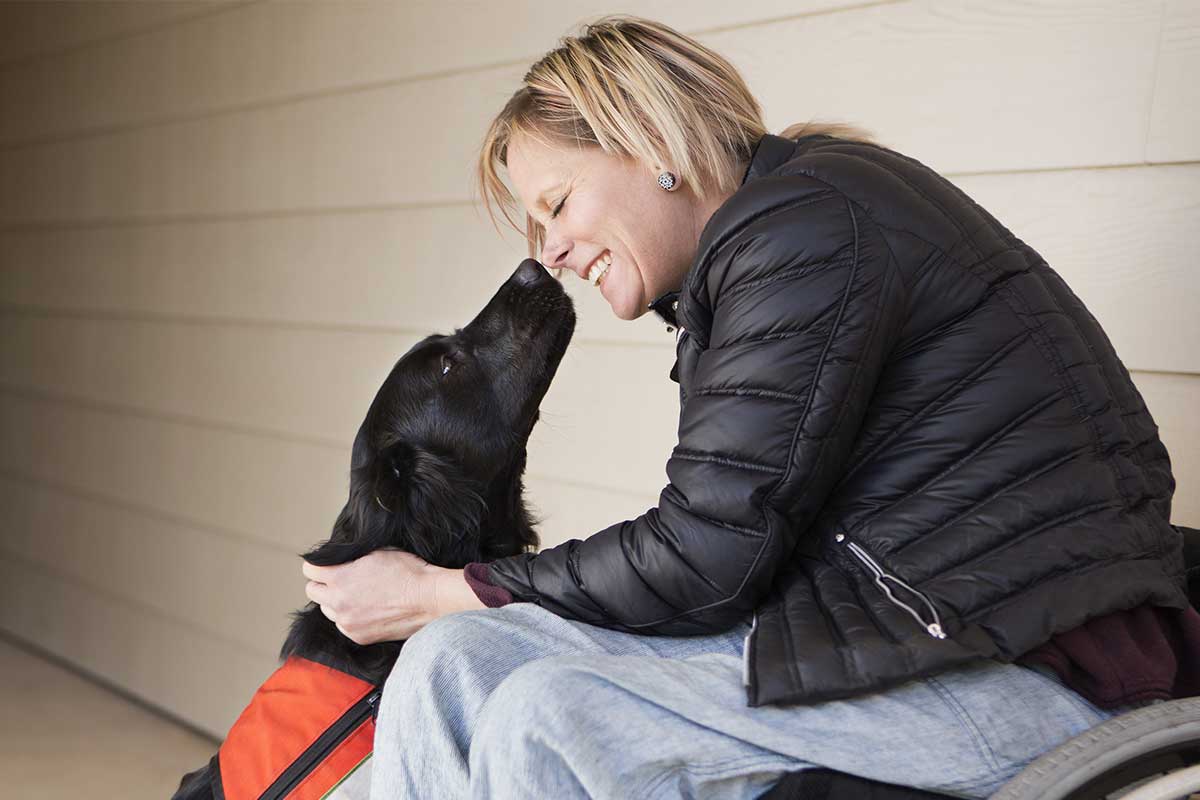While the pet dog is snoozing on the couch after a meal, a walk, and a game of fetch, the service dog is on duty. She is always ready to work, even in the middle of night. Because of the nature of the work — looking for something amiss, something dangerous — these working dogs pick up a lot of stress and need to be helped each and every day to let it go.
She may be waiting on a long, slow-moving line to go through security at the airport or waiting quietly next to your table in a restaurant. No matter where she is, the welfare of her human is always on her mind. Even when she gets the chance to hike on a dirt trail or swim in a chilly pond, even in the middle of the night, lights off, not a sound to be heard, she is ready. Service dogs not only lead people who are blind, alert people who are hard of hearing to sounds, open doors, and fetch dropped items, they also can detect a change in blood sugar, the scent of peanuts, an indicative change in breathing pattern, an elevation in heart rate, an impending seizure, toxins, and pain. The concentration required to do this work means that service dogs should never be handled, spoken to, or interrupted in any way while they are out.
Stress. It’s everywhere. So human partners need to know ways they can help their helpers to lower stress and feel great. Here are a few tricks, some of which also work for pet dogs — because life can be hard on anyone.
Before and After Work
Because service dogs must wait and wait and wait until you are called in to see the doctor, and because they pick up your stress and concerns, I like to take my dog for a hike before and after a doctor visit. The before hike helps me cope with my own anxiety about going to the doctor. The after hike, for us often in Central Park, helps me sort out and think about what I was told or even celebrate when the news is good. It helps my dog to relax, too. Getting outside and walking is one of the best ways for dogs and humans to lower stress.
Doggy Meditation
There are two ways to meditate. First, there’s guided meditation. For dogs, this can be done with a slowed down, thoughtful game that employs cues your dog knows well and enjoys doing. You can start with a ball. Hold the ball in your hand so your dog can see it, but do not do anything to excite her. Speaking in a quiet, calm voice, ask your dog to sit, then to wait. After a moment, roll the ball instead of tossing it. Again, remind your dog to wait and then, calmly, in a quiet voice, almost a whisper, give her the fetch cue. Repeat this slow, meditative retrieve several times, each time making each step slower.
What if your service dog becomes overly excited when she sees a ball? Try the second meditation. Do a silent walk. Let her walk on a loose lead and sniff whatever she likes for as long as she likes. Let her mind be a swirl in scents. Let her be a dog without asking her to do anything special except for safety. The longer the walk, the better, for both of you.
Pay close attention to your service dog and she will absolutely tell you when she’s getting stressed. You know your dog’s behavior and can read her moods. While there are times the dog needs to work despite some stress, there are also times you can intervene.
For working dogs, who need a good balance between work, play, and time to rest, lowering stress is a must. It will help the dog feel great and stay happily on the job for years to come.
This article was reviewed/edited by board-certified veterinary behaviorist Dr. Kenneth Martin and/or veterinary technician specialist in behavior Debbie Martin, LVT.
Carol Lea Benjamin is a dog trainer and author. In Do Border Collies Dream of Sheep? co-authored with Denise Wall, she wrote about how she raised her Border Collie, Sky, to be a service dog.








